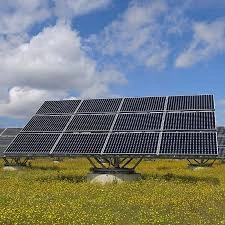Impact of High Temperatures on Solar Panel Efficiency and Performance
Solar Panel Efficiency at High Temperatures
Solar energy has become one of the leading alternatives to fossil fuels, owing to its sustainability and minimal environmental impact. However, the efficiency of solar panels is subject to various environmental factors, with temperature being a significant variable. Understanding solar panel efficiency at high temperatures is crucial for optimizing solar energy systems and making informed decisions for solar installations.
Understanding Solar Panel Efficiency
Solar panels, primarily composed of photovoltaic (PV) cells, convert sunlight into electricity. The efficiency of these cells is defined as the ratio of the electrical output to the incident sunlight energy. The performance of PV cells is affected by various factors such as the angle of sunlight, shading, and notably, temperature. Each solar panel comes with a specific temperature coefficient, which indicates how much its efficiency declines as temperature rises.
The Impact of Temperature on Efficiency
As temperature increases, the efficiency of a solar panel generally decreases. The typical temperature coefficient for silicon-based solar panels is around -0.4% to -0.5% per degree Celsius. This means that for every degree Celsius increase in temperature above the standard test condition (typically 25°C), the efficiency of the solar panel drops by approximately 0.4% to 0.5%. For example, at 35°C, a panel might operate at 95% of its rated efficiency, while at 45°C, efficiency could drop to 90% or lower.
The effect of high temperatures is particularly pronounced in regions known for their high solar insolation. In such areas, solar panels can reach temperatures significantly higher than ambient air temperatures due to the heat absorbed from sunlight. This phenomenon can lead to suboptimal energy generation, impacting the overall performance of solar installations.
The Science Behind Temperature Effects
solar panel efficiency at high temperatures

The reduction in efficiency at high temperatures primarily arises from the increased energy of the charge carriers (electrons) within the solar cells. At elevated temperatures, the heightened kinetic energy of these charge carriers results in greater recombination losses. When electrons recombine with holes (the absence of an electron), they do not contribute to the electric current flowing through the solar panel, leading to decreased output.
Moreover, high temperatures can affect the material properties of solar cells, which may induce permanent damage to the solar panels over time. This includes degradation of the semiconductor materials and potential delamination issues in the panel's protective layers, further diminishing their efficiency and lifespan.
Strategies to Mitigate High-Temperature Effects
To counteract the adverse effects of high temperatures on solar panel efficiency, several strategies can be employed. One approach is to increase the airflow around the panels. By designing solar installations with adequate spacing and mounting configurations, it is possible to allow for better heat dissipation and, consequently, improve overall performance.
Another solution is the use of panels with lower temperature coefficients. Technologies such as thin-film solar cells, which generally possess better high-temperature performance compared to traditional silicon solar cells, can be advantageous in hot climates. Research continues to develop new materials and technologies, including bifacial panels that capture sunlight on both sides, potentially improving energy yield under various conditions.
Utilizing tracking systems that orient solar panels toward the sun throughout the day can also maximize energy generation while minimizing additional heat buildup. By maximizing sunlight intake when temperatures are lower, these systems can help optimize efficiency.
Conclusion
Temperature is a critical factor influencing the efficiency of solar panels, particularly in regions with high solar irradiance. While high temperatures can lead to significant efficiency losses, understanding these effects allows for the implementation of strategies to mitigate them. As the global demand for renewable solar energy continues to rise, advancing technologies that enhance the efficiency and durability of solar panels in high-temperature environments will be essential. By investing in research and innovative solutions, we can harness the full potential of solar energy while ensuring sustainable practices for a greener future.
-
Unlocking Energy Freedom with the Off Grid Solar InverterNewsJun.06,2025
-
Unlock More Solar Power with a High-Efficiency Bifacial Solar PanelNewsJun.06,2025
-
Power Your Future with High-Efficiency Monocrystalline Solar PanelsNewsJun.06,2025
-
Next-Gen Solar Power Starts with Micro Solar InvertersNewsJun.06,2025
-
Harnessing Peak Efficiency with the On Grid Solar InverterNewsJun.06,2025
-
Discover Unmatched Efficiency with the Latest String Solar InverterNewsJun.06,2025







